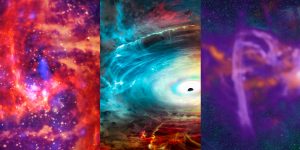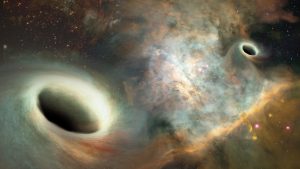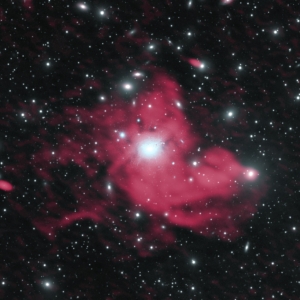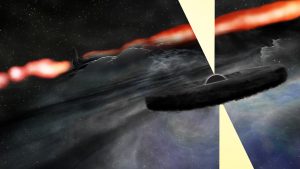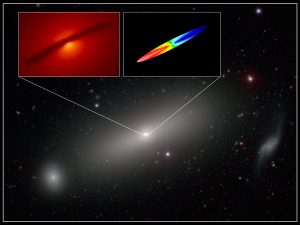Astronomers Detect Orbital Motion in Pair of Supermassive Black Holes
VLBA images detect orbital motion of two supermassive black holes as they circle each other at the center of a distant galaxy.
VLA Gives New Insight Into Galaxy Cluster’s Spectacular “Mini-Halo”
New VLA images are helping astronomers understand the origin of a giant radio-emitting structure in a cluster of galaxies.
VLA Reveals New Object Near Supermassive Black Hole in Famous Galaxy
Astronomers were surprised when the VLA revealed that a bright new object has appeared near the core of a famous galaxy. They think it’s a second supermassive black hole, indicating that the galaxy has merged with another in the past.
Close Galactic Encounter Leaves “Nearly Naked” Supermassive Black Hole
Astronomers using the super-sharp radio vision of the National Science Foundation’s Very Long Baseline Array (VLBA) have found the shredded remains of a galaxy that passed through a larger galaxy, leaving only the smaller galaxy’s nearly-naked supermassive black hole to emerge and speed away at more than 2,000 miles per second.
ALMA Measures Mass of Black Hole with Extreme Precision
ALMA measures mass of black hole with extreme precision.






